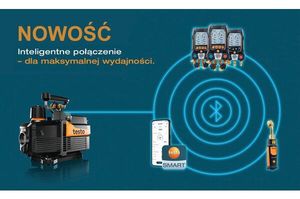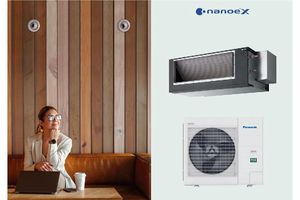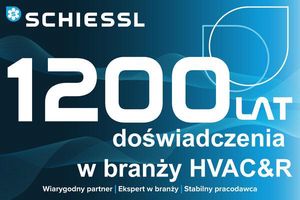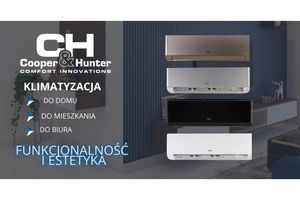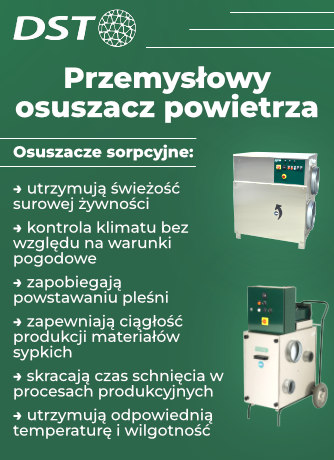Projekt SmartPM dotowany przez UE
EU supports research project with 10.3 million EUR for more efficiency - SmartPM enables new generation of motors through the development of an innovative semiconductor module.
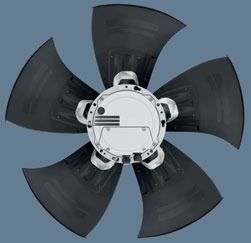
ebm-papst is amongst the members of the project SmartPM, which is working on reducing the energy consumption of household appliances, power supply units and devices in the field of health and medicine by up to 25% without reducing the maximum efficiency of the appliances or products.

In 2005, Europe adopted the EcoDesign Directive, which investigates the potential savings of energy-related products and stipulates minimum requirements where applicable. As a result of the Directive, Europe is supposed to reduce CO2 emissions by around 16 million tonnes annually and power consumption by 34 TWh annually. According to the EU commission, the energy consumption of fans in Europe alone currently is around 410 TWh – and trending upwards. Since the EU recently set high efficiency limit values for fans, the fan industry is now required to design its products for the European market in accordance with energy efficiency requirements.
The objective of significantly reducing energy consumption in industry and in households has also taken form in the SmartPM project (Smart Power Management in Home and Health), which was initiated by the ENIAC organisation and subsidised by the EU with more than 10 million EUR. Under the project management of Infineon, 18 companies from various fields and countries are working on reducing the energy consumption of household appliances, power supply units and devices in the field of health and medicine by up to 25% without reducing the maximum efficiency of the appliances or products. Among these applications it has become apparent that the greatest savings potential lies in electric motors and power supply units built into products such as servers, computers, refrigerators, climate control systems, washing machines etc. Air-conditioning and ventilation technology systems are often operated with high duty cycles; therefore, energy savings are particularly noticeable in them. By using efficient and controllable products, significant energy savings can be attained in these areas.
The SmartPM project participants also include ebm-papst, a leading manufacturer in the field of motors and fans. With "GreenTech", ebm-papst is putting its corporate philosophy concerning resource efficiency and sustainability in a nutshell (more at www.greentech.info). The heart of GreenTech is the EC technology established by ebm-papst. These efficient motors and fans achieve efficiencies of up to 90%, high energy savings and a significantly longer service life. The environmental advantage of ebm-papst products is measurable and meets the most stringent standards. Even today, they exceed the requirements of future limits many times over. These values pay off not only for the environment, but also for the user. The EC fans of ebm-papst are used in the widest variety of areas, including heat pumps, climate control systems, refrigerated cases, server cooling systems and many more. Unlike conventional AC motors, these fans are driven by an EC motor, which has an electronic control device known as the commutation electronics. By design, these motors
run synchronously, have no slip and therefore also no slip losses – an advantage compared to conventional asynchronous motor systems with voltage or frequency control. The commutation electronics make EC fans continuously adjustable. This way the speed can always be adapted as needed to the requirements of the ventilation system or the process. Precisely in the partial load range, EC motors demonstrate a significantly higher efficiency than AC motors. Only as much energy is taken in as is actually needed.
In co-operation with Infineon and the partners of the SmartPM project team, ebm-papst is researching a new semiconductor module for EC fans that is intended to significantly increase the maximum efficiency of these motor electronics yet again. As a result, the EC motor is becoming substantially more compact. Improved cooling performance has a positive effect on the motor management. To demonstrate the potential energy savings and interim results, a demonstrator was manufactured and presented to the project participants. It measures the power input of the EC fans with the new integrated semiconductor module compared to conventional AC fans. Depending on the application, energy savings of up to 25% can be realised. The miniaturisation of electronics makes it possible to easily replace existing AC fans with the energy-efficient EC fans in nearly the same installation space. EC technology is designed for the widest range of voltages, which guarantees usability worldwide, depending on the motor type, either with single-phase AC from 200 V to 277 V or with three-phase current supplies from 380 V to 480 V. The frequencies lie at 50 or 60 Hz, respectively. The air performance and efficiency are unaffected by frequency changes. This means that the same fan type can be operated on different power systems without further ado.
The research project will be completed in January 2012. New developments of the participants are anticipated in the widest variety of applications, which should enable additional energy savings in households as well as businesses.
About SmartPM
The SmartPM project (Smart Power Management in Home and Health) was initiated by the ENIAC organisation and is being subsidised by the EU with 10.3 million EUR. The objective of this project is to reduce the energy consumption of household appliances, power supply units and appliances in the field of health and medicine by up to 25% without any drop in efficiency of the appliances or products. The European Joint Technology Initiative for SmartPM includes 18 companies and academic institutions: Consejo Superior de Investigaciones Cientificas (Spain); Delft University of Technology (The Netherlands); Dublin City University (Ireland); ebm-papst Mulfingen (Germany); Elec-Con technology (Germany); Fraunhofer Gesellschaft (Germany); GE Vingmed Ultrasound AS (Norway); Infineon Technologies (Germany); JLT Mobile Computers Sweden (Sweden); Kontron Embedded Modules (Germany); Microspire (France); On Semiconductor (Belgium); Philips Consumer Lifestyle BV (The Netherlands); Philips Technologie GmbH Forschungslaboratorien (Germany); Stiftelsen Sintef (Norway); STMicroelectronics (Italy); Telefunken Semiconductors (Germany); and Thales Research and Technology (France).
For more information on the project, go to www.eniac.eu
Źródło: ebm-papst





